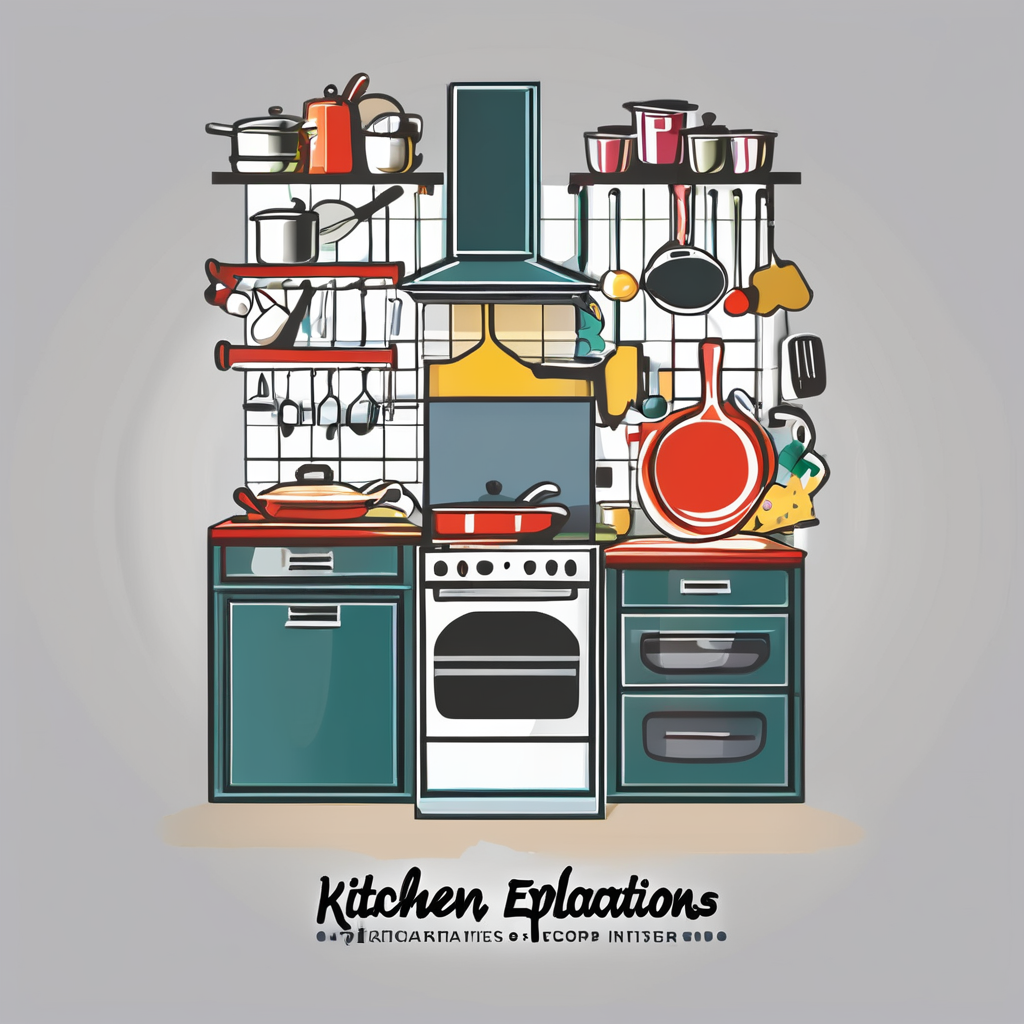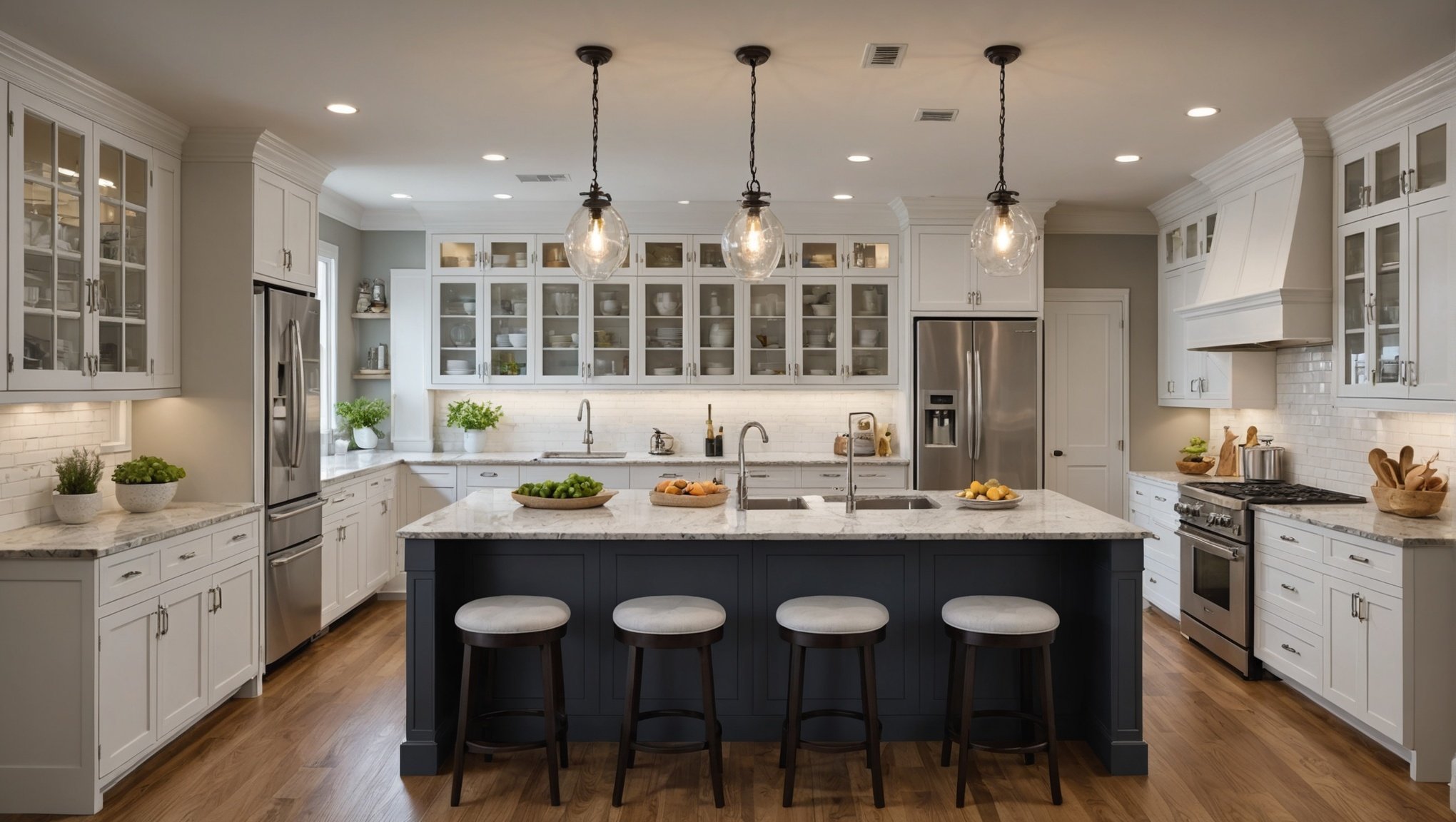Kitchens often feel cramped, but optimizing counter space can transform them into functional havens. Innovative solutions like vertical storage and multifunctional tools not only enhance usability but also create a more inviting atmosphere. By unlocking hidden potential, you’ll discover ease in meal preparation and a sense of spaciousness. Get ready to reclaim your kitchen space and elevate your culinary experience with practical tips designed for every cozy kitchen.
Understanding Kitchen Space Optimization
Effective kitchen space management is crucial for creating a functional and enjoyable cooking environment. One of the primary challenges in small kitchens is the limited counter space, which can hinder meal preparation and storage. To address this, innovative design principles focus on maximizing every inch of available space.
Also to see : Transform Your Galley Kitchen: Leveraging Mirrors to Create an Illusion of Spaciousness
Importance of Kitchen Counter Space Optimization: Efficient counter space usage allows for smoother workflows and more accessible storage. It can transform a cramped kitchen into a well-organized area, making cooking more enjoyable and less stressful.
Common Challenges: Small kitchens often suffer from cluttered countertops due to inadequate storage solutions. This can lead to inefficient cooking processes and frustration. Additionally, limited space can restrict the number of appliances and utensils that can be kept within reach.
Have you seen this : Transform Your Kitchen Renovation: Tips for Adding Energy-Efficient Lighting
Innovative Design Principles: To optimize kitchen space, consider incorporating multi-functional furniture and smart storage solutions. For example, use wall-mounted racks to free up counter space or invest in pull-out shelves to maximize cabinet usage. Another effective strategy is to use vertical space by installing overhead storage or hooks for hanging utensils.
By understanding and implementing these principles, you can enhance your kitchen’s functionality and make the most of its available space.
Creative Storage Solutions
Effective creative kitchen storage solutions can significantly enhance a small kitchen’s functionality. A key strategy is utilizing vertical space, which often goes underused. Installing shelves and racks on walls can free up essential counter space. This approach not only provides additional storage but also keeps frequently used items within easy reach.
Incorporating multi-functional furniture is another innovative way to optimize space. Consider tables with built-in storage or foldable countertops that can be stowed away when not in use. These solutions provide flexibility and adaptability, allowing you to adjust your kitchen layout as needed.
Innovative use of containers and organizers can further enhance storage efficiency. Clear containers help in quickly identifying contents, while stackable designs maximize cabinet space. Drawer organizers can prevent clutter by keeping utensils and tools neatly arranged.
By integrating these creative storage solutions, you can transform a cramped kitchen into a streamlined, efficient workspace. This not only improves the cooking experience but also contributes to a more pleasant and organized home environment.
DIY Projects for Space Efficiency
Enhancing your kitchen’s functionality doesn’t always require professional help. With some DIY kitchen organization projects, you can create custom solutions tailored to your needs.
Custom Shelving
Building custom shelving is an excellent way to optimize space. Start by measuring the area where you want to install the shelves. Choose materials that match your kitchen’s aesthetic. Cut the boards to the desired length, sand them for a smooth finish, and secure them with brackets. This approach allows you to design shelves that fit perfectly in your space, providing additional storage for spices, dishes, or cookbooks.
Repurposing Furniture
Consider repurposing old furniture for kitchen use. An unused bookshelf can become a pantry, and a vintage ladder can be transformed into a pot rack. These projects not only save money but also add a unique touch to your kitchen. Paint or stain the furniture to match your existing decor for a cohesive look.
Hidden Storage Options
Creating hidden storage options can help keep your kitchen clutter-free. Install pull-out drawers under cabinets or use toe-kick drawers beneath base cabinets. These hidden spaces are perfect for storing baking sheets, cutting boards, or other flat items, keeping them out of sight but easily accessible.
Essential Space-Saving Products
In a small kitchen, having the right space-saving kitchen products can make a significant difference. Let’s explore some must-have gadgets and compact appliances that enhance functionality without taking up too much space.
Must-Have Kitchen Gadgets
Invest in gadgets like collapsible measuring cups and nesting bowls. These items save space by fitting neatly into one another, reducing clutter. Consider a handheld immersion blender, which is compact yet versatile, ideal for small kitchens.
Stackable Storage Solutions
Stackable storage solutions are essential for maximizing cabinet space. Opt for clear, stackable containers that allow you to see contents at a glance. This not only keeps your kitchen organized but also ensures efficient use of vertical space. Compare brands to find those with airtight seals to keep food fresh.
Compact Appliances
When it comes to appliances, size matters. Choose compact versions of your favourite kitchen tools, like a mini food processor or a slimline toaster. These appliances provide the same functionality as their larger counterparts but take up significantly less space, making them perfect for small kitchens.
Organizational Techniques
Efficient kitchen organization can transform your cooking area into a seamless workspace. One effective strategy is to declutter your kitchen counters by storing rarely used items in cabinets or drawers. This not only clears up space but also enhances the visual appeal of your kitchen.
Consider color-coding and labeling as a method to streamline access to your kitchen essentials. Use coloured labels or containers for different categories such as spices, baking supplies, or snacks. This approach simplifies finding ingredients, saving time during meal preparation.
Creating designated zones for various kitchen tasks is another crucial organizational technique. Assign specific areas for food preparation, cooking, and cleaning. For example, keep cutting boards and knives near the prep area, while pots and pans should be close to the stove. This zoning system improves workflow efficiency and reduces unnecessary movement around the kitchen.
Incorporating these kitchen organization tips can lead to a more functional and enjoyable cooking experience. By maintaining a tidy and well-structured kitchen, you can focus more on the joy of cooking rather than the hassle of searching for misplaced items.
Visual Aids and Layout Planning
Optimizing your kitchen layout is essential for maximizing space and efficiency. Visual aids play a crucial role in planning the layout, helping you envision how different elements fit together. They allow you to experiment with various configurations before committing to a design, ensuring the most effective use of space.
Examples of effective kitchen layouts include the L-shaped, U-shaped, and galley designs. The L-shaped layout is ideal for small kitchens, providing ample counter space and room for appliances without crowding. The U-shaped layout offers more storage and workspace but requires a bit more room. The galley layout is perfect for narrow spaces, with two parallel countertops maximizing efficiency.
To assist in kitchen layout optimization, numerous tools and apps are available. Software like SketchUp and RoomSketcher enables you to create detailed floor plans and visualize your kitchen in 3D. These tools offer features such as drag-and-drop elements, allowing you to experiment with different layouts and styles easily. By utilizing these resources, you can ensure your kitchen design meets your needs and enhances your cooking experience.
Maintenance and Sustainability
Maintaining an organized kitchen involves adopting sustainable kitchen practices that not only enhance functionality but also promote environmental responsibility. A key strategy is to incorporate sustainable materials into your kitchen design. Opt for bamboo or reclaimed wood for cabinetry and shelving, as these materials are renewable and reduce environmental impact.
Strategies for maintaining an organized kitchen include regular decluttering sessions. Assess your kitchen items periodically to identify what is essential and what can be donated or recycled. This practice not only keeps your space tidy but also supports sustainability by reducing waste.
Incorporating sustainable kitchen practices can be as simple as using energy-efficient appliances and LED lighting, which conserve energy and lower utility bills. Consider composting organic waste to minimize landfill contributions, turning scraps into nutrient-rich soil for your garden.
Regularly reassessing and optimizing your kitchen space ensures it remains efficient and environmentally friendly. Evaluate your layout and storage solutions every few months to adapt to changing needs. This ongoing process helps maintain a balance between functionality and sustainability, ensuring your kitchen is both a practical and eco-conscious space.






